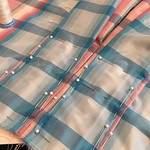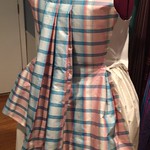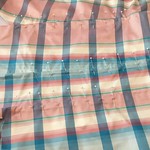Anyway, my 2017 round up. I didn't feel like I'd made all that much over the course of the year, until I wrote it all down and realized I did do a fair amount. So here we go!
( pictures galore! )































(Yes, that was indeed worthy of sparkly text. Just because.)
According to "Dress in France in the Eighteenth Century" by Madeleine Delpierre,
The robe à la piémontaise, made fashionable at the time of the marriage of Princess Clotilde of France, sister of Louis XVI, to the Prince of Piedmont, was a variation on the robe à la française: the loose, flowing pleats at the back were added later to form a kind of cape attached behind. [source]
This indicates that the back pleats were attached only at the shoulder and left completely loose the rest of the way down. I'm working primarily from the extant robe à la piémontaise held in the collections of the National Museum in Denmark, which includes a pattern taken from their robe. Their pattern clearly shows where the back pleats rejoin the skirt, and there is a noted and marked seam in the skirt. See look, I drew on the diagram as proof. And to add to that, from the few others I've seen photographs of, if the back hem is visible, there doesn't seem to be a break in the hem in any of them that would indicate there is a separate piece where the pleat 'cape' overlaps the skirt back. More picture analysis and doodles to possibly come at a future date?
But anyway, my goal is to do as faithful a recreation of that dress as possible. I pinned a width of the silk (that will actually be the petticoat when I get to sewing) into the pleat configuration to get an idea of the look, just because, and here it is.



(Very wrinkly silk: what happens when it accidentally winds up under a large piece of brocade. Good thing I know how to operate an iron. )
The Danish robe is very simple. with trim only along the center front of the bodice, and because my fabric is so bold on it's own, I don't intend to trim it more than that. The only thing I'm a bit unsure of is the sleeve cuffs. Should it have ruffles? I feel like there should be something there, even if it's a narrow lace frill. But that will be decided when I get closer to the end point, I think.
For now I need to focus on the under bits. The 1780s is more of a rounder silhouette than earlier, without the hoops, and more emphasis to the rear, which will make the gap between back and pleats stand out more, so I think I'll make a rump for this, one that adds some width to my hips as well, instead of the solely rear-heavy one I made for my linen round gown last year.
Stay tuned for more robe à la piémontaise progress! Since this is such a rare style, I intend to document as much of my process as possible.






